This post may contain affiliate links. Please see our disclosure policy.
Wild grape jelly is the perfect way to use wild foraged grapes!
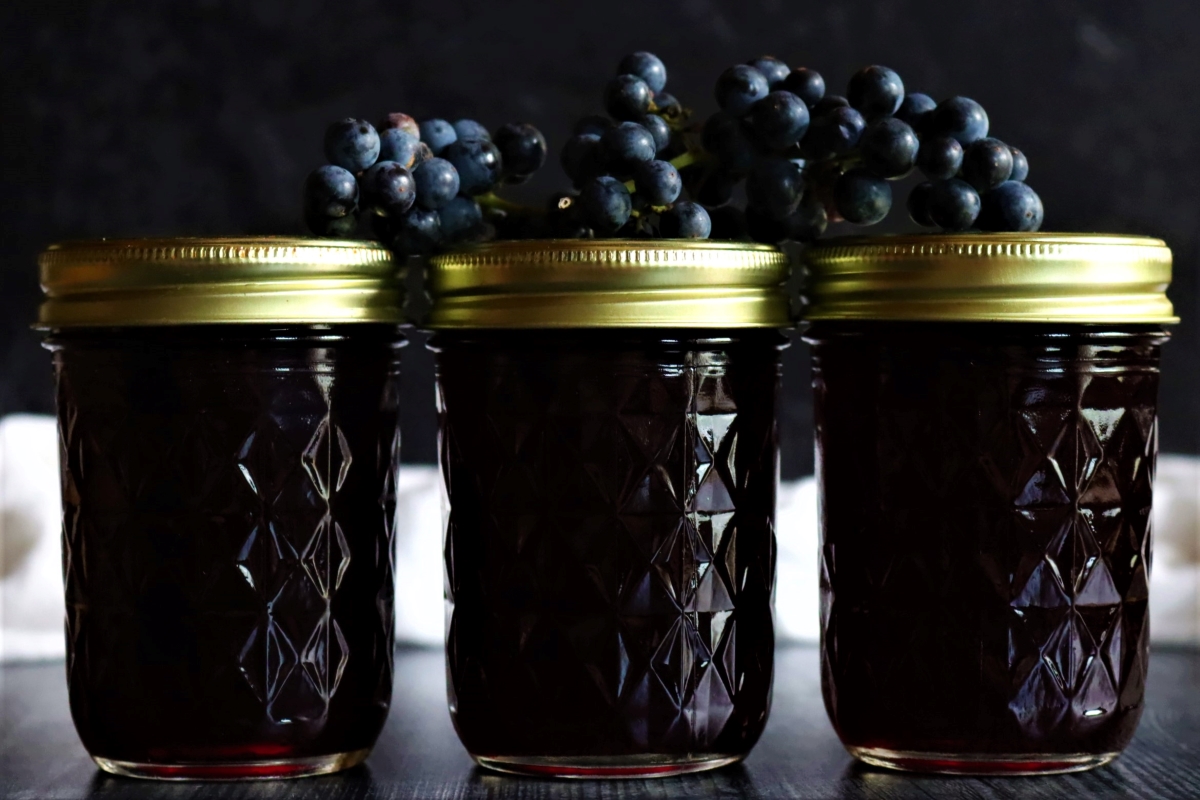
Wild grapes can be incredibly prolific, and you can find them just about anywhere! They grow up just about anything from fences to street lights, in both the country and city. All it takes is a single bird dropped seed, and a bit of space to climb into the sunlight…and there will be wild grapes!
The thing is, while they’re absolutely free for the taking, prolific and flavorful…they also tend to be incredibly tart. That’s where wild grape jelly comes to the rescue.
Homemade jelly needs a good bit of sugar to set anyway, and wild grapes are tart enough to take the sugar and still be full of incredible flavor.
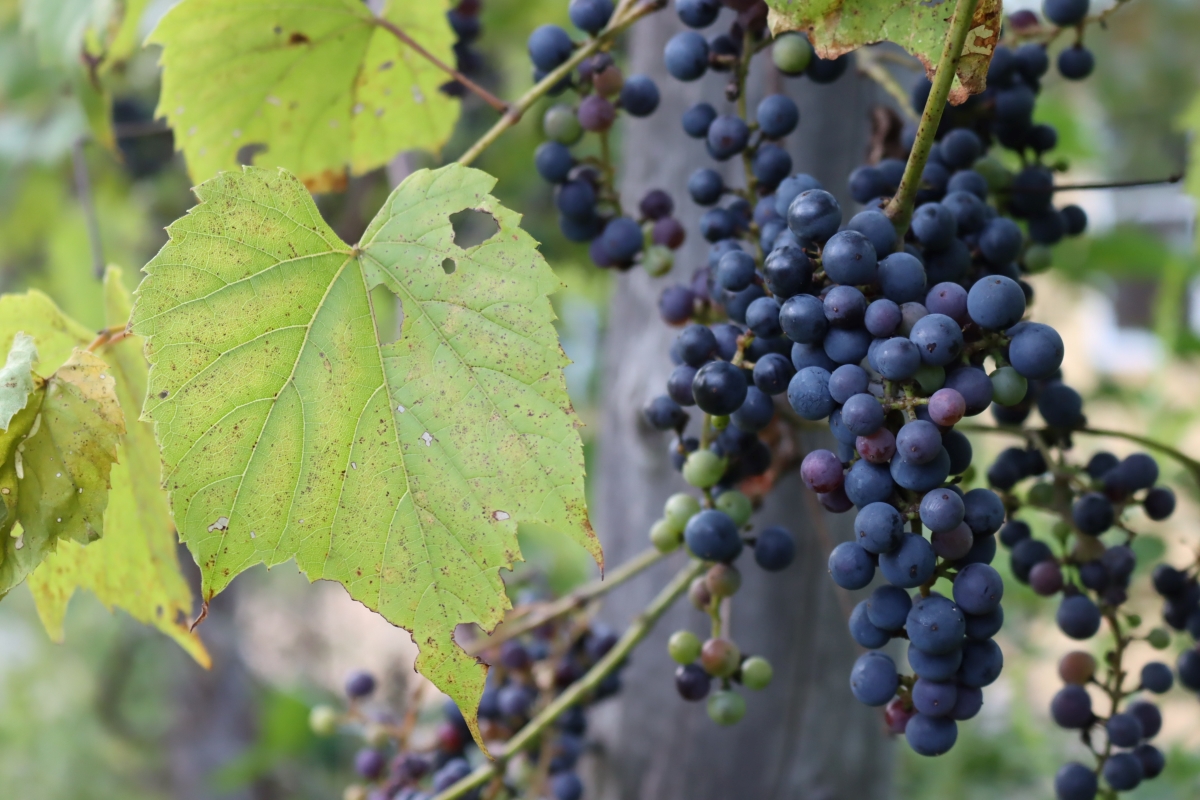
Processing Wild Grapes for Jelly
The first step in making wild grape jelly is extracting the juice.
Generally, for jelly you place the fruit in a saucepan or stock pot with a small amount of water, and then gently heat while mashing the fruit with a potato masher. After about 5 to 10 minutes of simmering, the fruit has fallen apart and is ready to be strained.
It can then be strained through a jelly bag or a fine mesh strainer lined with a double layer of cheesecloth. Both work great.
I make a lot of homemade jelly, so I use a steam juicer, which extracts juice from fruit a lot more efficiently and doesn’t require straining at all (so no messing with cheesecloth).
All wild grapes are a bit different, but I’ve found it takes about 3 pounds of wild grapes to make a quart of juice in the steam juicer. Using a saucepan and cheesecloth, I’d budget more like 4 pounds since that method is a bit less efficient.
A single “batch” requires 4 cups of juice, so aim to pick about 3 to 4 pounds (or roughly 8 to 10 cups of unstemmed grapes).
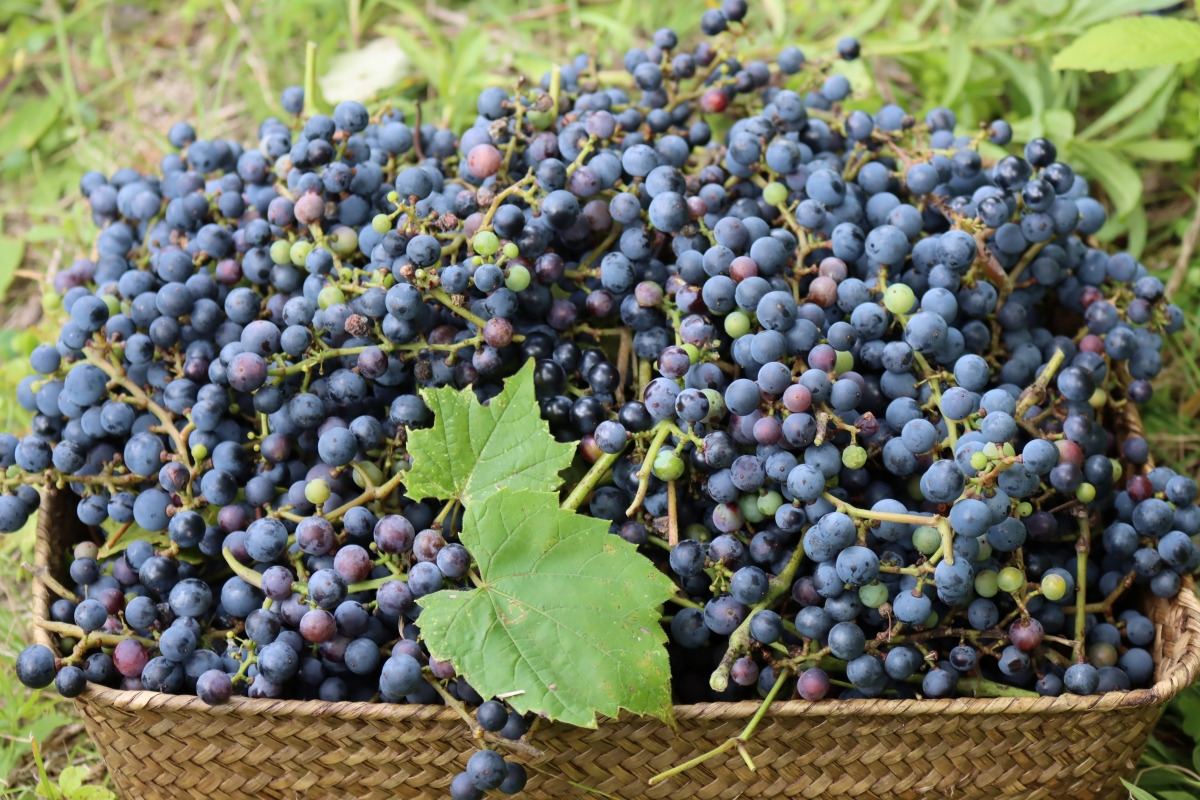
Once you’ve collected the juice, you absolutely must refrigerate it overnight. That step is recommended with all grape juice, but it’s NOT OPTIONAL when working with wild grapes.
Why?
Grape juice contains tartrate crystals, which are crystals of tartaric acid. There are small amounts in cultivated grapes too, and some varieties have more than others. Generally though, it’s been bred out of cultivated grapes…but it’s incredibly common (and abundant) in wild grapes.
When the juice is warm, the tartaric acid is dissolved in the juice, but once it cools, it solidifies into crystals.
It’s important to remove the tartrate crystals before you make your jelly because they will form inside the jelly when it cools if you don’t.
What’s the big deal?
Not only are tartrate crystals kind of ugly in your jelly jars, but they’re also actually a bit dangerous. The crystals are intensely sharp and irritating, and they can actually damage your digestive tract.
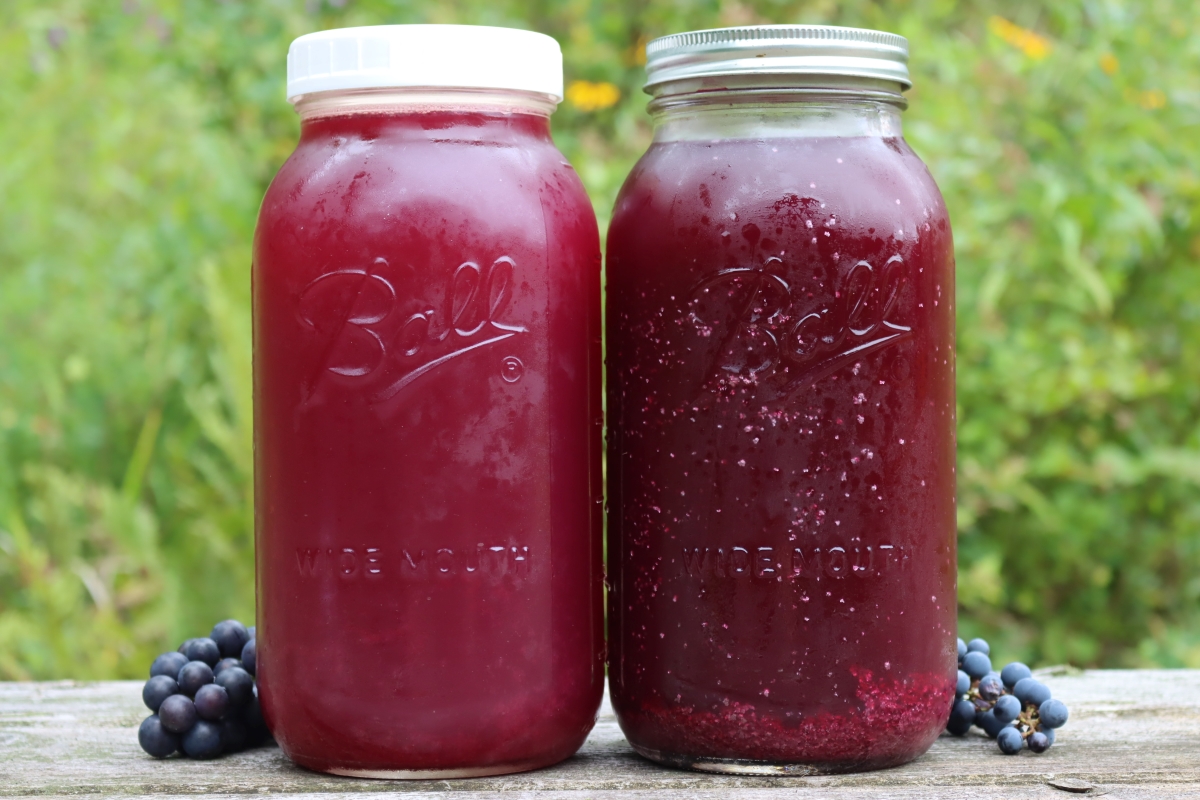
In a half gallon of wild grape juice, I pulled out nearly 1/2 cup of tartrate crystals. So in a “batch” of wild grape jelly with 4 cups of juice, you’d have about 1/4 cup of tartrate crystals…or nearly a tablespoon per 8 oz jelly jar.
That’s a lot of sharp crystals in your jelly, and it can easily be avoided by simply refrigerating (and then straining) the juice.
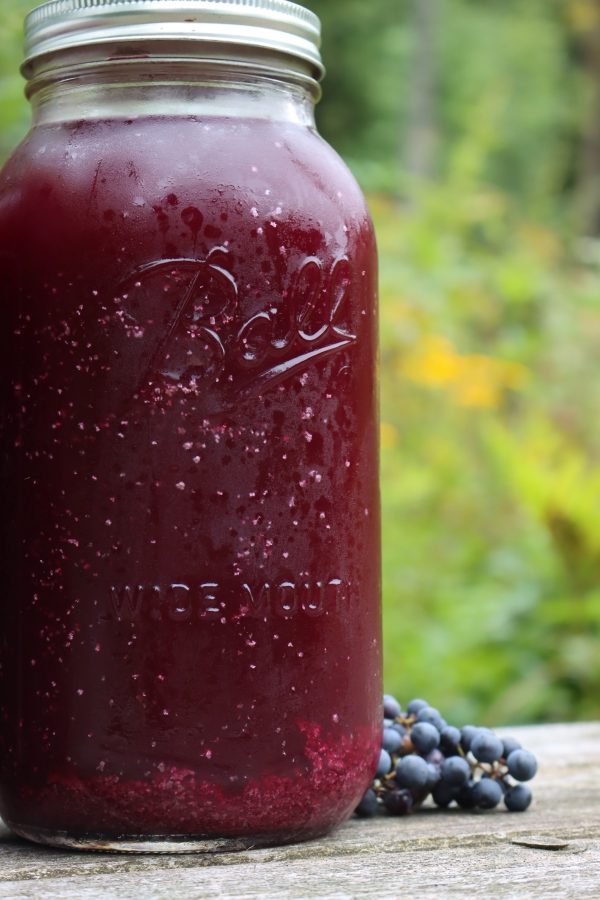
Pour the cold wild grape juice through a double layer of dampened cheesecloth to remove the tartrate crystals.
The total amount of tartrate crystals will vary based on the wild grapes you find, and some actually have very little. Those are the ones that were selectively bred over generations to make today’s cultivated grapes, so don’t worry if you don’t have a lot of tartrate crystals to filter out.
Once you’ve filtered out the tartrate crystals, your wild grape juice is ready to make wild grape jelly.
(or, at this point, you can sweeten and drink it as grape juice too. You can also can wild grape juice, sweetened or unsweetened, using the same canning instructions you’d use for canning grape juice from cultivated grapes.)
How to Make Wild Grape Jelly
I’ve tried many different methods for making wild grape jelly, both with and without pectin.
In theory, wild grapes have a lot of natural pectin and could potentially set without added boxed pectin. (Especially if you add a bit of tart green apple or crabapple to the mix to boost the pectin content.)
While I love making natural jellies without resorting to the boxed stuff, I’ve yet to have luck getting wild grape jelly to set without added pectin. I’ve tried many times, but every time I just get a runny syrup-y jelly instead.
Given that, I strongly recommend making wild grape jelly with added boxed pectin. Any pectin will work, but I generally opt for Sure Jel Low Sugar, as that will gel properly no matter how much sugar you add. Since wild grapes are very tart, probably won’t be using a “low sugar” recipe, but it’s nice to have the option.
If you use Regular Boxed Pectin (Sure Jel, Mrs. Wages, Ball Pectin, etc.), the general rule of thumb is you need 4 cups juice, 4 cups sugar, and 1 box (1.75 oz) of pectin. With a low sugar pectin, the amount of sugar is up to you.
Since wild grapes are already quite acidic, you don’t need any added lemon juice.
Start by bringing the strained and filtered wild grape juice up to a boil in a saucepan. Add the pectin, but don’t add the sugar yet.
Return to a boil and cook the juice and pectin at a full rolling boil for 1 minute, stirring to make sure the pectin is well distributed.
Add in sugar, and again return to a boil. Stir the pot to dissolve the sugar while boiling for an additional minute.
Remove the jelly from the heat and ladle into prepared jelly jars leaving 1/4 inch headspace.
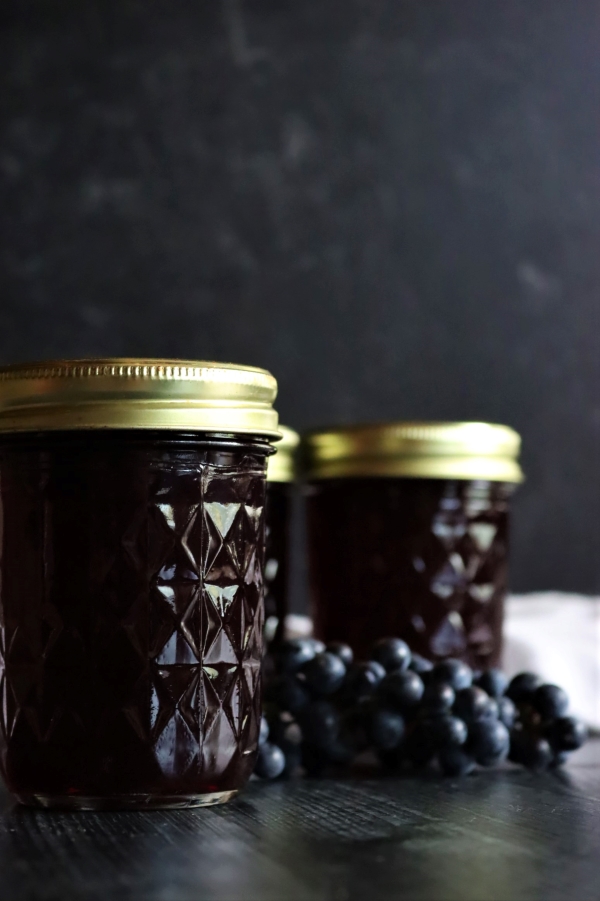
Canning Wild Grape Jelly
It’s perfectly fine to make a small batch of wild grape jelly as a refrigerator or freezer recipe. In the refrigerator, this jelly will keep for about 2 weeks. In the freezer, it’ll keep for about 6 months.
Personally, I love the simplicity of water bath canning because it allows me to store the jelly right on the pantry shelf for up to 18 months. It’s incredibly quick and easy with homemade jellies, and it only requires 10 minutes in a boiling water bath canner.
If canning, prepare a water bath canner, jars, and lids before beginning. Then, prepare the jelly as described above. Ladle into prepared jars, leaving 1/4 inch headspace, and use a jar lifter to load the jars into a simmering water bath canner.
Bring the canner up to a full rolling boil, and process the jars for 10 minutes (or 15 minutes above 6,000 feet in elevation.)
Use a jar lifer to remove the jars, and allow them to cool completely on a towel on the counter. Check seals after 12-24 hours, and store any unsealed jars in the refrigerator for immediate use.
Properly canned and sealed jars of wild grape jelly will maintain peak quality on the pantry shelf for 12-18 months, and be safe to eat long after that, provided they remain sealed. Refrigerate after opening.
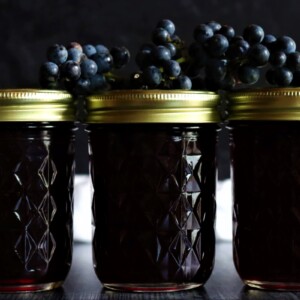
Wild Grape Jelly
Equipment
- Low Sugar Pectin (Sure Jel)
Ingredients
- 3 to 4 lbs Wild Grapes, to make 4 cups juice
- 4 cups Sugar
- 1 box Powdered Pectin, 1.75 oz Pectin *see notes
Instructions
- Start by juicing 3 to 4 pounds of wild grapes. You can do this by placing them in a stock pot with a small amount of water (about 1/2 cup) and bringing them to a boil on the stove for 5 to 15 minutes. Stir and mash the fruit while it cooks, and remove from the heat once the grapes have fallen apart. Strain the juice through a jelly bag or double layer of cheesecloth. (Alternately, use a steam juicer.)
- Measure the resulting juice, you should have about 4 cups. If you have less, add a bit of water or go collect more wild grapes to bring it up to 4 cups. If you have more, save the extra juice for another use.
- Refrigerate the juice overnight, and strain the juice again through a double layer of cheesecloth in the morning. This step is not optional when working with wild grapes, see notes.
- If canning, prepare a water bath canner, jars, and lids.
- Place the strained wild grape juice into a jelly pot and bring the juice to a hard boil. Add the powdered pectin (but not the sugar) and boil hard for 1 minute, stirring to distribute the pectin.
- Add the sugar, and boil hard for 1 minute, stirring continuously to dissolve the sugar.
- Remove from the heat and ladle into prepared jars.
- If canning, be sure to leave 1/4 inch headspace and cap the jars with 2-part canning lids. Process in a water bath canner for 10 minutes (or 15 minutes above 6,000 feet in elevation). Remove the jars to cool on a towel on the counter and check the seals after 12-24 hours.
- Properly sealed and canned jars of jelly will keep for 12-18 months. Refrigerate after opening. If not canned, the wild grape jelly will keep for about 2 weeks in the refrigerator or about 6 months in the freezer.
Notes
Pectin Type
You can use any type of powdered boxed pectin in this recipe, including Sure Jel, Mrs. Wages, Ball Pectin, etc. All of those pectins require at least a 1:1 ratio of sugar to fruit juice to set. If you'd like to reduce the sugar in this recipe, I'd recommend using Sure Jel low sugar. You can also use Pomona's universal pectin, but that pectin works differently. Strain the grape juice as described to remove the acid crystals, and then follow the directions on the Pomona's package for regular grape jelly. Is using liquid pectin, the order of operations is reversed. The sugar is added before the pectin, and then the pectin is added last. I don't recommend liquid pectin because it requires absurd amounts of sugar to gel. With 4 cups juice, you'd need 7 cups sugar to get the jelly to gel using liquid pectin.Nutrition
Nutrition information is automatically calculated, so should only be used as an approximation.
Jelly Recipes
Looking for more easy jelly recipes?
Wild Foraged Canning Recipes
There’s more than one way to put up a little wild-foraged goodness!

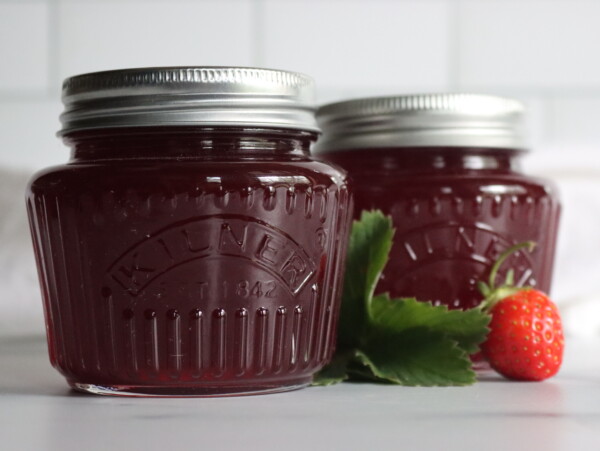
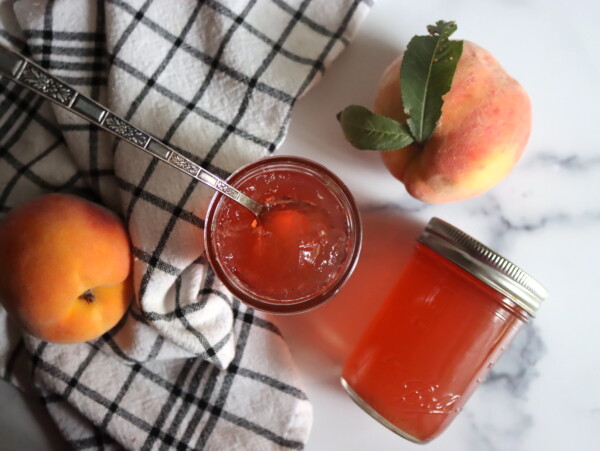
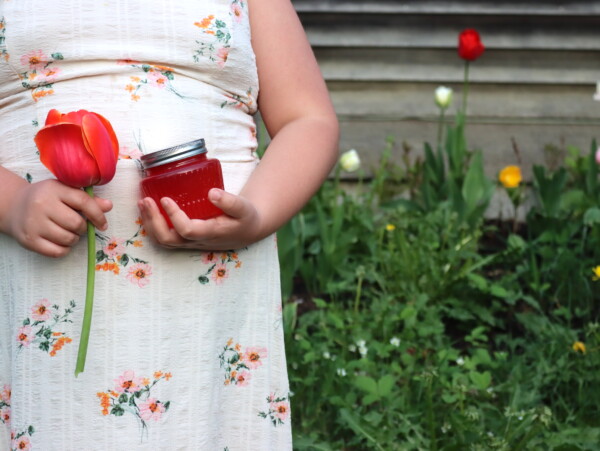
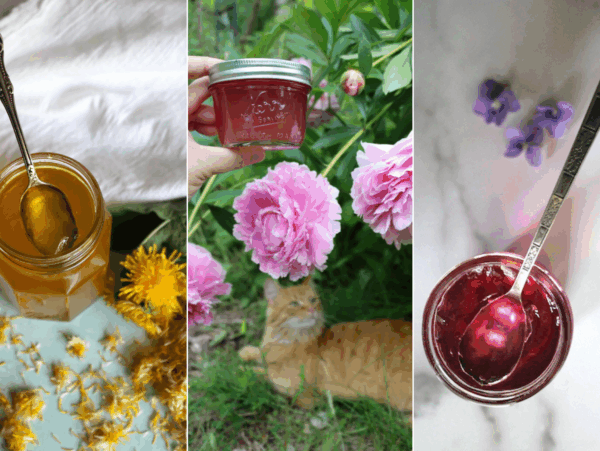
So the wild grapes are getting ripe where I live. I filled half of a plastic grocery store bag with them yesterday and stemmed them last night. Ended up with 5 cups of grapes. I used my instant pot as a steam juicer and only got a disappointing 1.25 cups of juice out of them. I guess because it’s been really dry here lately? Most of the grapes are the size of large Elderberries, to be honest.
Anyway, the juice I have is nice and thick and clear. Just wondering how much water I could get away with adding to bring the volume up? Any thoughts? I wouldn’t want to dilute it too much. But I figured if other recipes use the boil and mash method, they’re adding a decent amount of water up front. It could be 50% for all I know. Just wondering what your experienced opinion would be.
I guess I could just go pick more but I’d have to wait a few days for more to ripen. Then I’m racing against the birds and critters. Thanks!
I’d say you could make a half batch by adding enough water to get to 2 cups of liquid. Wild grapes, especially dry ones, tend to have a pretty intense flavor and adding water should still leave you with a very flavorful jelly.
How long can I keep the grape juice in freezer? I froze some in 2022 and don’t know if I should use it. I always freeze some to make jelly when I have time but have never kept it this long.
It shouldn’t spoil in the freezer, but the quality will decline over time. Defrost it and try it, and if it still tastes good give it a go.
Do you think I could double this recipe with no issues?
My son and soon to be daughter -in- love (law), want me to make 100+ jars as wedding favors. I have the materials, and already have over 40 quart jars of grape juice from my vines. Even though I’ve canned a lot, believe it not, never made jelly.
You should be able to double this recipe, but I wouldn’t make bigger batches than that. Jelly can be finicky, and if the pot is too big then it’s not evenly heated and won’t set.
How much jelly does this make?
The recipe makes about 4 to 5 jelly jars (8 oz each). I usually get the full 5 jars when I make it.
If using low sugar pectin, how much do you use? Since not specified I am assuming the same amount as regular pectin? Thank you
Sheila Clark
Yup, low-sugar pectin and regular pectin are interchangeable in equal amounts. One box is 1.75 ounces by weight, or 6 tablespoons by volume.
I made this jelly without pectin and yes it is syrupy at first, but let it sit once the hars are sealed, for a couple of weeks and it thickens up.
I wondered if it was still good, if it had gone bad but it was perfectly good when opened. My husband loved it and we gave some out and everyone loved it.
Oh nice! I’m glad it set for you.
Fantastic my grandmother used to make wild grape juice and jelly I helped her! I want to do this myself!